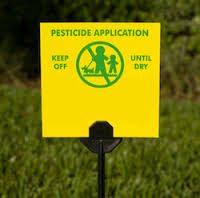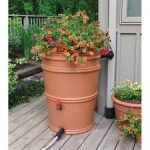Dangerous levels of herbicides found in drinking water
One of the most widely used herbicides, Atrazine, has been found in drinking water at levels that exceed federal safety guidelines, but the EPA has not published these results and the public was never warned that the safety of their drinking water was in question.
Atrazine is heavily used in agriculture, golf courses, and home lawn care, and has been found to wash off these areas during rain storms and to end up in our watersheds. Atrazine is one of the chemicals responsible for the Gulf of Mexico dead zone at the mouth of the Mississippi River.
You can read about the high levels of Atrazine in drinking water at these links:
Debating how much weed killer is safe in your water glass
EPA fails to inform public about weed killer in drinking water
Weed killer may be in your drinking water at dangerous levels
Can we trust the manufacturer to provide accurate results?
There are several points to be made about this subject that are not discussed in these articles. First, the agency responsible for collecting data and reporting results regarding the safety of this chemical, Syngenta, is in fact, the same agency that manufactures this chemical.
I don’t know about you, but I’m not exactly thrilled about the fact that we are entrusting the manufacturer of this chemical to give accurate and unbiased information about their product. The EPA says this chemical is safe, but they are getting their research from the people that make the chemical.
Home gardeners do not follow application directions
Home gardeners are notorious for not following application directions and recommended amounts of toxic chemicals. People tend to mistakenly think that if a little bit of a chemical is “good” then more is better. In fact, these chemicals are applied at rates that are ten times higher than the recommended amount in home gardens than the rates applied in agricultural settings.
Home gardeners are also negligent in following safety precautions when applying these chemicals. Most of these toxic chemicals recommend wearing long sleeve pants and shirts, a respirator, and to not apply any chemicals when the wind is blowing. How many times have you seen a home gardener wearing a respirator? Not very often is my experience.
If a chemical manufacturer recommends wearing a respirator, how safe do we really think that chemical is?
Toxic chemicals have many unintended and harmful consequences
Here at Ecosystem Gardening I am of the opinion based on my reading of many scientific papers that the use of toxic chemicals is not in keeping with the principles of Ecosystem Gardening. Our goal is always on wildlife conservation in our gardens. All actions have consequences, and your responsibility to wildlife precludes the use of toxic chemicals which have many negative consequences to wildlife.
Atrazine has been found to disrupt hormonal functions in frogs, in essence turning male frogs into females. If it can do that to frogs, do you want to take the chance that it can do that to humans, too?
Amphibians, such as frogs, toads, and salamanders, are in great danger. Populations of many species of amphibians are in serious decline, or have disappeared altogether. One of the most prevalent reasons for this decline is chemical contamination.
Amphibians are particularly sensitive to chemical poisoning, and because of this they are the current “canaries in the coal mine” an early warning system that can point to environmental problems that will ultimately affect human health.
Either stop using toxic chemical for selfish reasons to protect human health, or do it to protect the wildlife that is declining because of our use of these chemicals, but make the pledge today to stop using these chemicals in your garden.
More From Ecosystem Gardening:
Submit your review | |








